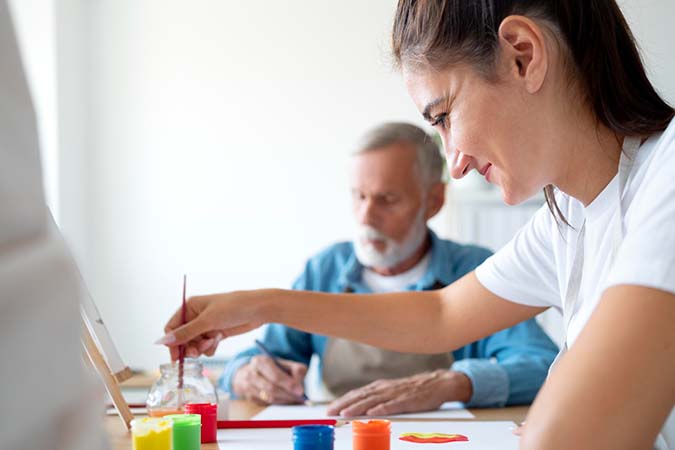I’m often asked about what it means to be an art therapist. People are interested in the difference between “regular” or traditional talk therapy and art therapy. They also want to know what it takes to become a professional art therapist. The difference lies in our training and background. We have the skills to work as a traditional therapist, but there are a few ways in which art therapists are different.
We have specialized training
To become an art therapist, you must first complete either a graduate level degree or graduate level certificate. Then you’re a credentialed professional who can provide professional services. Our graduate level courses train us in the ethics, use of materials, safety concerns, and appropriate assessments in art therapy. We spend a few years of our schooling dedicated to the use of art in a therapy session.
We are experts in two different areas
To work in a clinical setting, art therapists must complete a dual master’s degree in mental health counseling and art therapy. This allows us to interweave the principles and approaches of traditional mental health counseling with art therapy tools and techniques. Since everyone has different needs, art therapists often offer both traditional talk therapy and art therapy.
We hold special credentials
To be certified art therapists, the Art Therapy Credentials Board (ACTB) must approve us. We must hold credentials based on our education, level of training, and experience in the field. Art therapists are different in that we meet rigorous ATCB standards to prove that we have the tools we need to work as professional art therapists.
We are often creatives ourselves
I have never met an art therapist who doesn’t engage in art making themselves. We are interested in and appreciate art. Art therapists often work on their own projects as acts of self-care and for creative expression. It’s easy for us to connect to what you’re working on because we love working with art supplies, too.
We understand artistic media and materials
Did you know that each art material is used for a different therapeutic purpose? We use clay to help you connect with your own physical state and experience. Watercolor paint helps with easy flow. And we use collage for clients who feel stuck and don’t know what to create. As art therapists, we understand the properties of art materials. We’re in tune with who and what each material is best suited for. Our training enables us to make decisions about appropriate materials for each client. We’re also aware of adaptability and accessibility and understand the importance of safety when working with artistic media.
It takes a little extra push to become art therapists. But you are in good hands when you work with us. Art therapy is a regulated profession. It provides us with specialized training to help you best. If you’re seeking a unique and creative approach to counseling, you might want to try art therapy.
Learn more about Sam Nolan here.
Image by Freepik
